Getafe have once again proven to be the surprise package in La Liga in 2019/20, with much of the credit going to coach José Bordalás. One of the star men in Bordalás’ system is 24-year-old Uruguayan midfielder Mauro Arambarri.
Arambarri joined Getafe, initially on loan in 2017 as the Azulones returned to La Liga, on loan from Boston River after a failed loan spell at Girondins Bordeaux in Ligue 1. Since then, he has gone from strength to strength, even earning a first call up to the Uruguayan national team before pandemic struck and led to the postponement of the international break.
This scout report will provide a tactical analysis of the Getafe man’s performances in La Liga. in the Copa del Rey and in the Europa League in 2019/20. It will give an analysis of his tactics within the Getafe set-up and how he could feature for Uruguay.
Role
Arambarri features on the right-hand-side of Getafe’s central midfield pairing in a four-man midfield in a traditional 4-4-2 shape. Under Bordalás. he has become the key man in the middle of the park alongside Serbian partner Nemanja Maksimović. Arambarri tends to stick to the right-hand side of this duo but is neither the more defensive nor the more offensive of the two. The duo take turns, with one bursting forwards as the other provides cover.
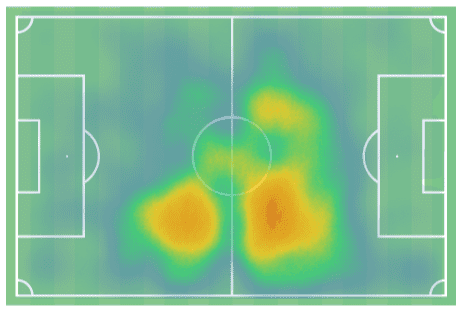
To further identify the role that he plays, it would show a greater reliance on his attacking strengths than in the case of his team-mate in the middle. Whilst both act in the same way, with regular attacking movements, Arambarri is more regularly involved. This is due to the set-up of Marc Cucurella on the left of midfield as a more offensive option than Allan Nyom on the right. This means that regularly Arambarri can be found drifting further wide and further forward than Maksimović on the left, given that he is afforded greater cover and Nyom is often happier to sit back and allow Arambarri to use the flank ahead of him, filling in for him positionally.
Strengths
Among Arambarri’s repertoire of talents is a mix of both offensive and defensive elements. This is essential in his role, to provide both the defensive side of breaking up play effectively, but also the offensive aspect of leading the transition of a side which relies upon dominating the middle of the park to do so. This leads to the recognition of two of Arambarri’s greatest strengths in his dribbling and transition play and also defensively, in his work rate and determination to turn over possession.
One of the greatest strengths of Arambarri’s game is one that Bordalás has looked to thrive upon in his role within the system. That is the role of Arambarri in the transition, with his dribbling being an essential element. An older side, the eighth oldest in La Liga, and particularly in attack, the counter-attack is one which relies more heavily upon midfielders carrying the ball forwards from the defensive third, rather than rapid passing. This suits Arambarri, whose strength and technique allows him to outmuscle many who look to take him on or prevent him from progressing. Over both legs of the victory over Ajax in the Europa League, Arambarri was decisive for this very reason. Winning the ball deep and wide, he found that his options were limited but still carried the ball to the halfway line and then intelligently used his body positioning to draw an easy foul and allow his fellow midfielders to gain him in the attack.
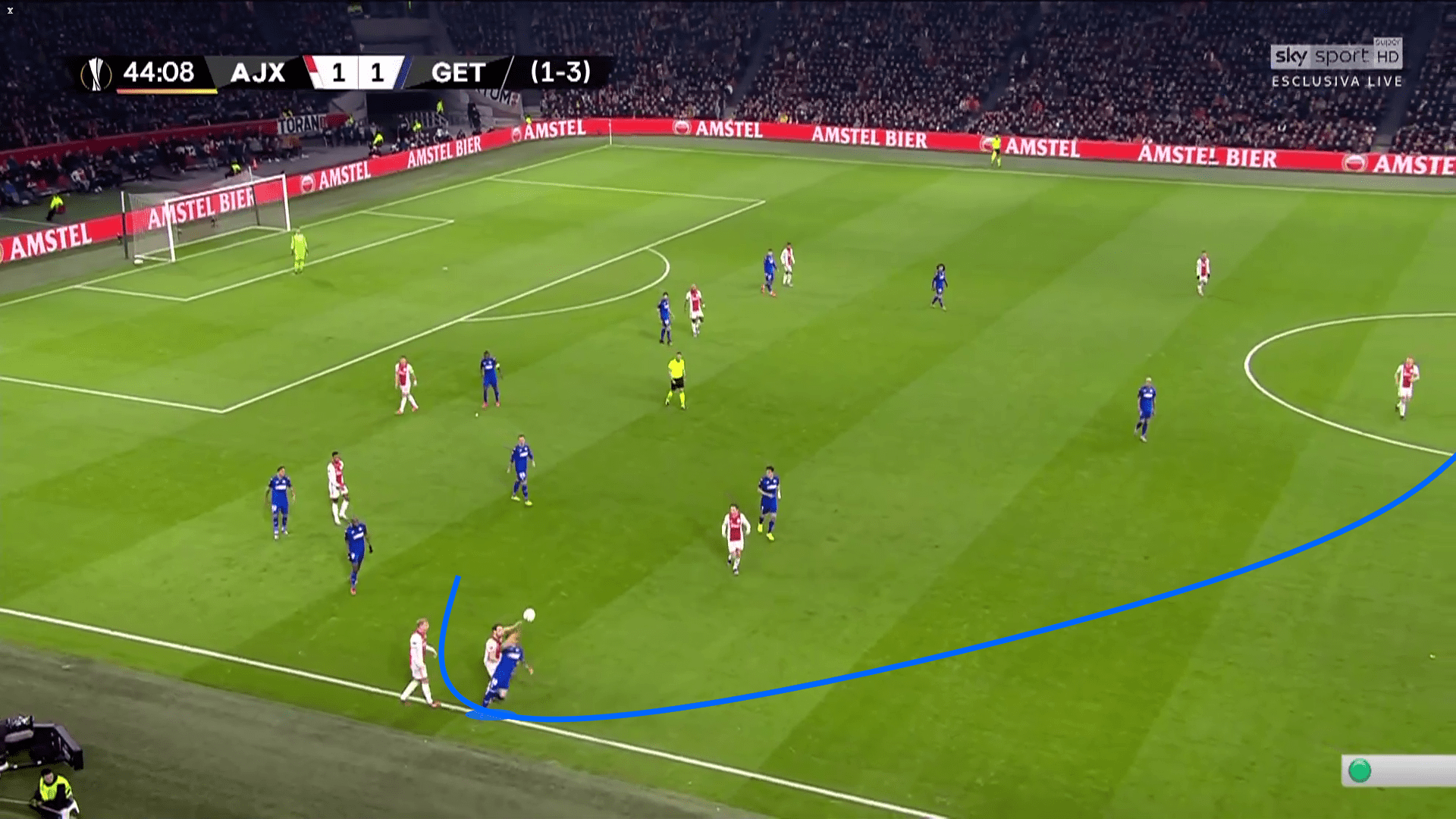
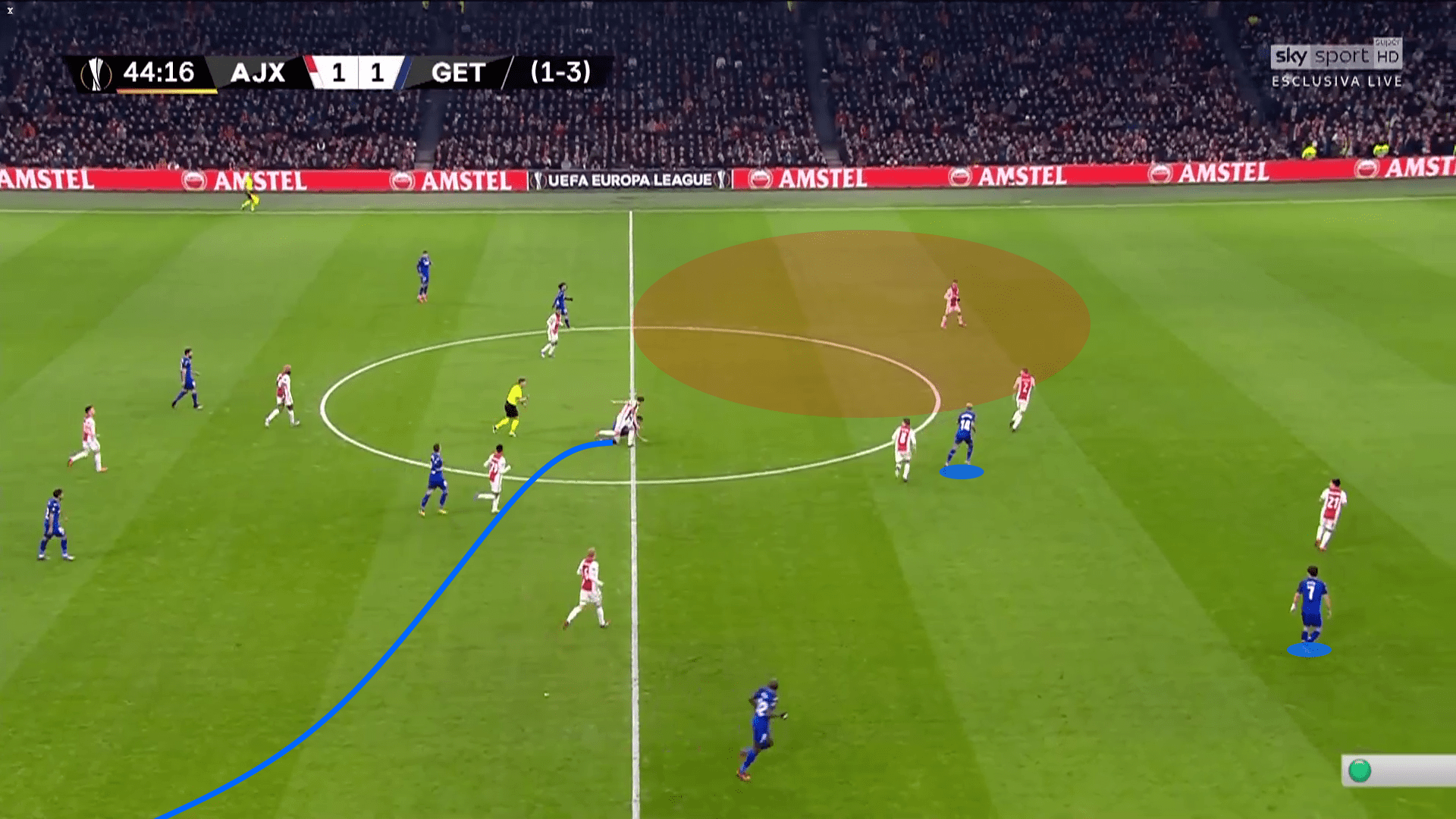
The other major plus side to his game is his work rate. Few players in LaLiga cover more ground than the Uruguayan and he is a key element of his team’s defensive structure. Only four players can top his 220 defensive duels in La Liga, impressive given his role in midfield which is far from defensively focused. Arambarri has featured in 90% of Getafe’s game time this season, missing one game through injury, one through suspension, being rested against Sevilla and then being sent off late on against Celta Vigo. To continue such an impressive work rate despite being one of the four most regular outfield players for Getafe goes to show his attitude in a side where the younger talents such as Arambarri, Maksimović and Cucurella are expected to do the leg work for the more mature talents who constitute the majority of the Getafe midfield and defence.
Weaknesses
As shown, Arambarri has great talent and potential. At times though, his youth and inexperience does shine through. as he does only have just over 100 appearances at first-team level in European football. This is where his weakness lies, primarily in his decision making, both in and out of possession. As is seen in his strengths, his warrior-like work rate and determination are a positive, but at times do lead him to rush into decisions and make rash calls which are actually counterproductive. In this scout report, two such areas will be highlighted in his passing decision-making and also his discipline.
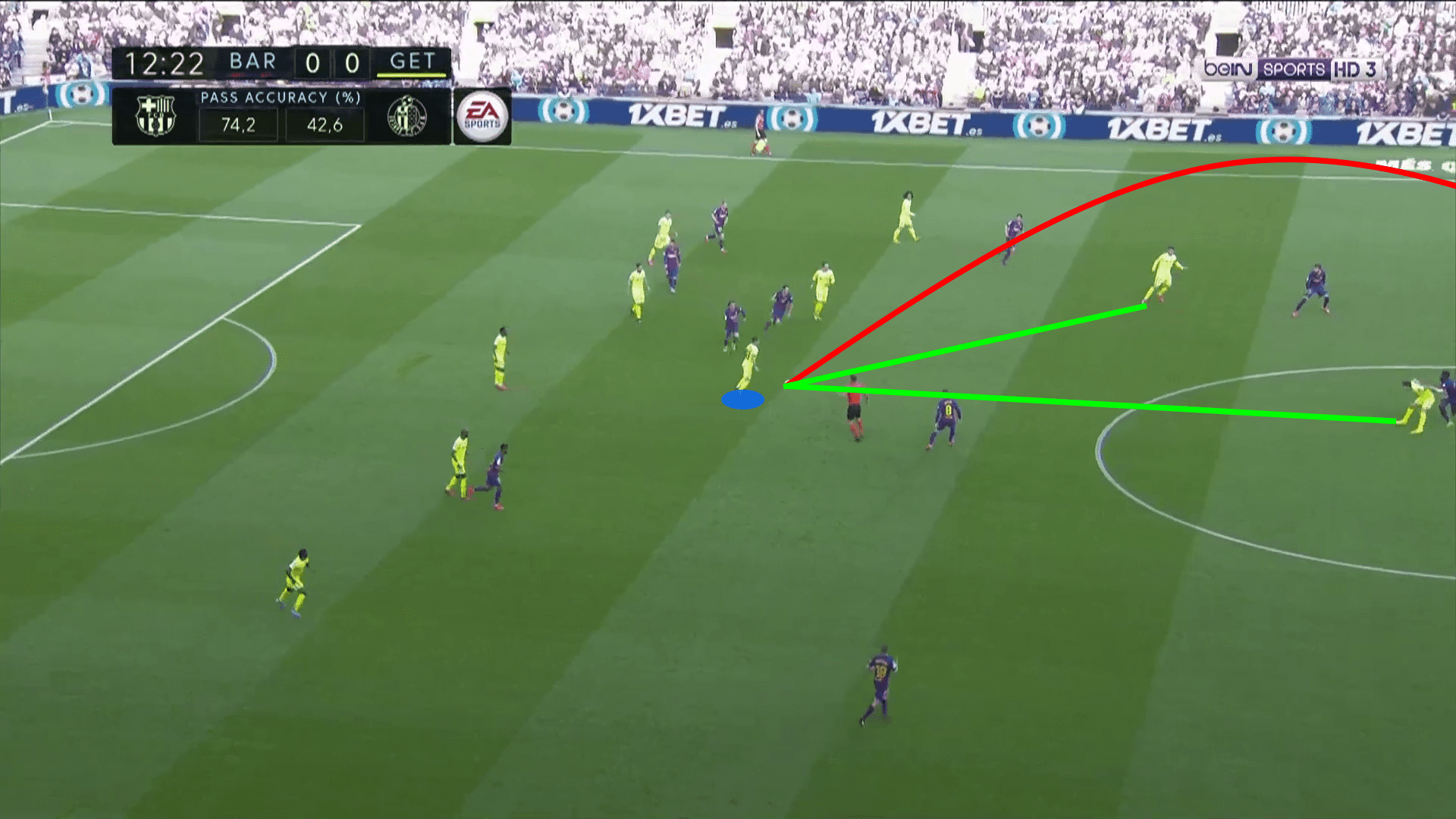
One concerning area is when it comes to his decision making with passing. Getafe’s approach means there is a tendency to favour a more direct style, explaining Arambarri’s high 3.8 long passes per game, but it is clear that it is not a strength for Arambarri. With a pass completion of 74.2% and a poor 57.1% for long passes, Armbarri is often poor when choosing the option. As can be seen in this example against Barcelona, where possession counts more than ever, the press meant that he had to act quickly and could not dribble in the transition, but he did have two simple passing options to his two forwards. Instead, he played a long ball over the top which was out of reach for either man and simply turned possession straight back over to Barcelona. The direct style of Getafe may encourage this kind of gambling, but Arambarri regularly has options available with Getafe rigidly keeping their front two in deep attacking positions.
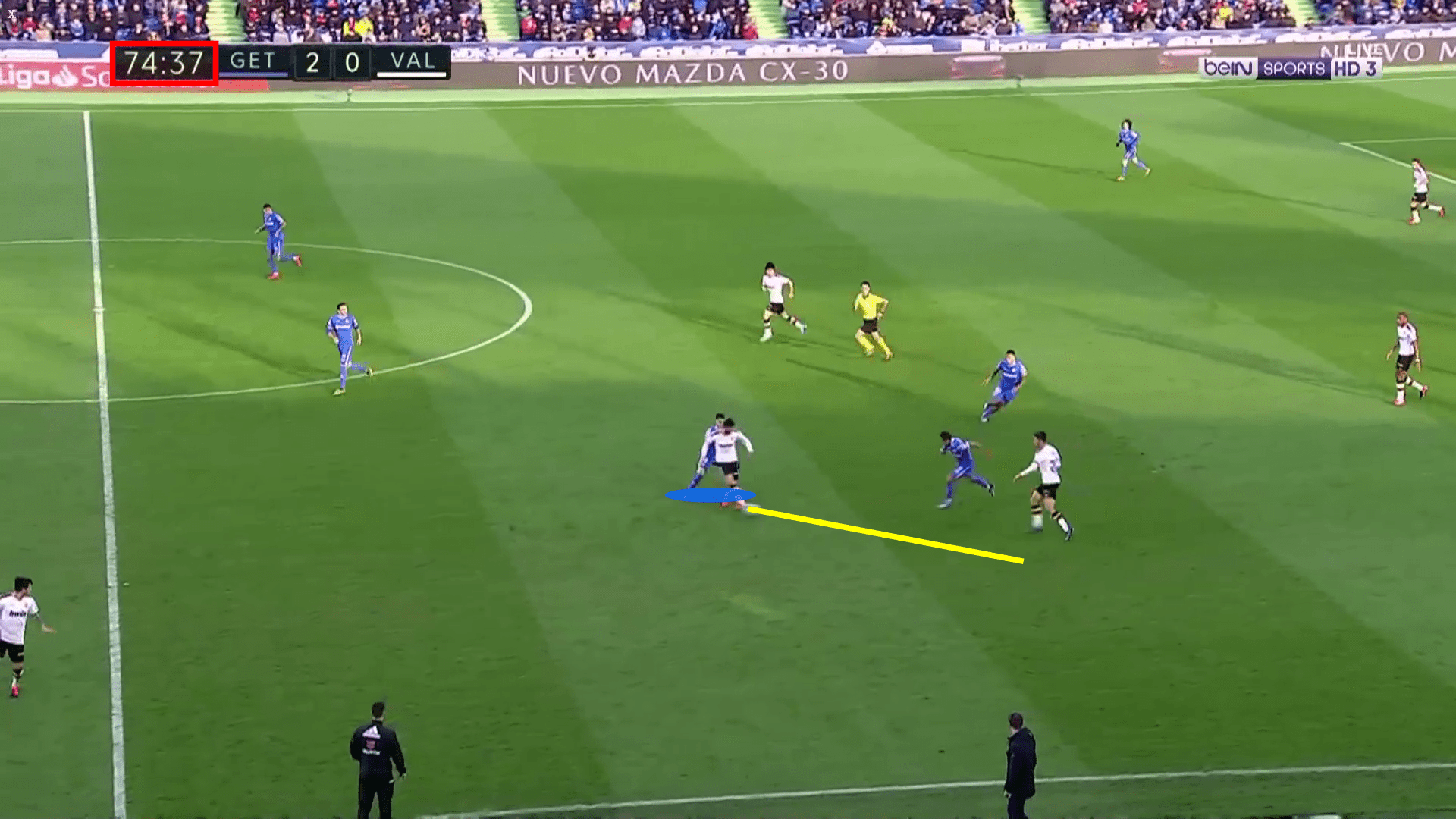
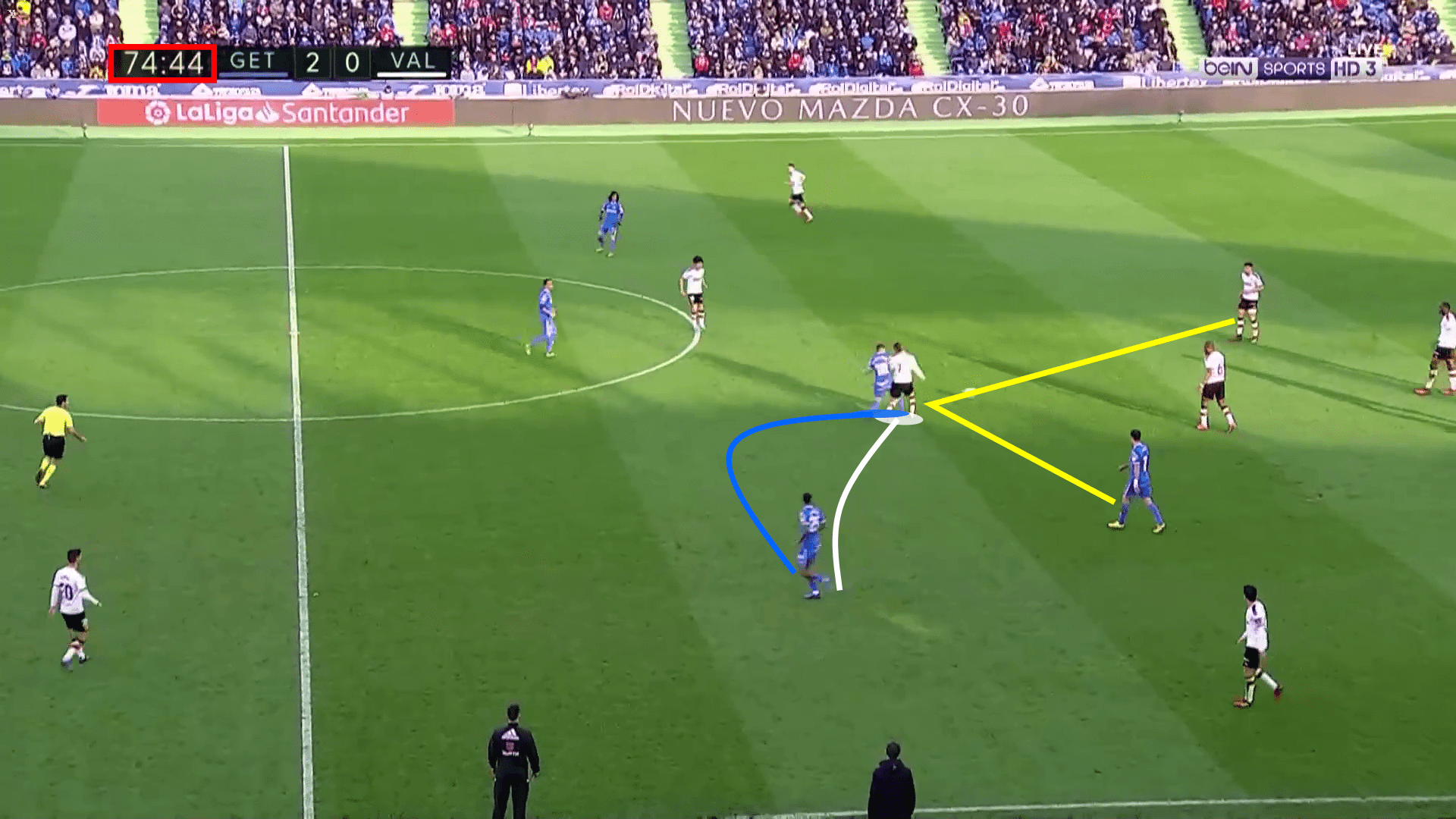
The second major weakness to Arambarri’s game is his poor discipline. While it is to be expected that a player in his role, with his work rate, will concede fouls and pick up cards, many of his are unnecessary. The above example shows one such case, where two fouls on Gonçalo Guedes in the space of seven seconds led to a yellow card, both of them with Valencia having possession in their own half, Guedes playing the ball with his back to goal, all with a two-goal lead for Getafe. One in every four of his defensive duels leads to a foul conceded, a concerning rate, with only Real Madrid’s Casemiro and team-mate Jaime Mata having conceded more than his 57 fouls in La Liga this season, with eight yellow cards following. His strong game management means that he has only been dismissed twice since moving to Getafe, the second actually coming in his most recent outing against Celta Vigo, but it is an area which Bordalás will hope to improve in his game as he gains experience.
Conclusion
Arambarri is clearly a player with huge potential. There are still some elements to his game which should be worked upon if he is to succeed at a top-level club, but for now, they are perhaps well suited to the Getafe system deployed by Bordalás. With a formidable partnership alongside Maksimović and a coach who believes in him, Getafe looks certain to be the best place for him in the next few years. His work rate and drive through the middle make him an essential piece of the jigsaw for Bordalás and his success at the Estadio Coliseum Alfonso Pérez. Given that importance, it may only be a question of time before a big club comes calling to bring that talent to their own midfield set-up should Getafe not break into the top four in La Liga this season or next.




Comments